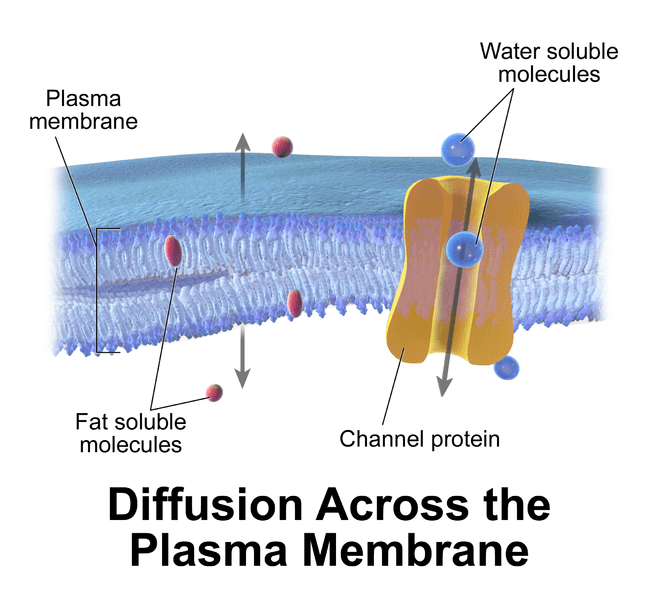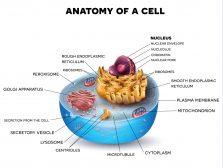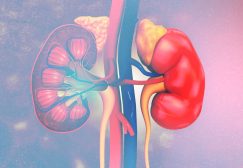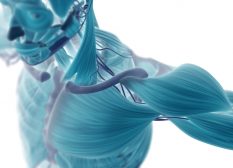Table of Contents
Passive transport is a type of cellular transport in which substances such as ions and molecules move down their respective concentration gradients. It means that the substance tends to move from an area of higher concentration to an area of lower concentration. Substances tend to move towards the region where they are few. Since their movement is downhill or along their concentration gradient, the process does not require metabolic energy (e.g. ATP) as opposed to active transport, another type of cellular transport that essentially requires ATP to move substances against their concentration gradient. The four major types of passive transport are (1) simple diffusion, (2) facilitated diffusion, (3) filtration, and (4) osmosis.
Passive transport definition

Passive transport is defined as a type of transport that moves substances from an area of greater concentration to an area of lesser concentration. Thus, the movement of substances is along a concentration gradient.
Passive transport vs. active transport
Both passive transport and active transport are cellular transport mechanisms employed by a cell to move substances across a biological membrane. Passive transport, though, differs from active transport in the way that the substances move along the direction of their respective concentration gradient as opposed to the movement of substances that is against their gradient in active transport. The movement of substances in passive transport is towards the direction opposite to that of active transport.
In passive transport, substances (e.g. ions and solutes) move across a membrane from a region of their higher concentration to a region of their lower concentration. The movement is described as downhill. Because of this, cellular energy (e.g. ATP) is not required as it is in active transport. Rather, passive transport utilizes kinetic and natural energy to drive the movement. Conversely, in active transport, the movement is uphill, meaning they move from an area where they are less in number to an area where they already are in greater number. Because of this, the process generally uses ATP as the driving force.
Types of passive transport
In moving substances across a biological membrane, a passive transport may or may not need the assistance of a membrane protein. There are four major types of passive transport are (1) simple diffusion, (2) facilitated diffusion, (3) filtration, and (4) osmosis. Simple and facilitated diffusions refer to the net movement of molecules from higher to lower concentrations. Osmosis refers to the diffusion of a solvent (usually water molecules) through a semipermeable membrane from lower to higher solute concentrations. Filtration is the movement of water and solute molecules across the cell membrane driven by hydrostatic pressure that is generated by the cardiovascular system.
Biological importance
Passive transport is important for the proper functioning of plants and animals. In plants, for instance, gases like carbon dioxide and oxygen diffuse into and out of a plant cell via stomatal openings according to their respective concentration gradients. Carbon dioxide is essential to plants as it is one of the main reactants of photosynthesis. One of the sources of carbon dioxide is the animals that release the gas through expiration. This release of carbon dioxide to the environment is mediated by passive transport. In particular, the diffusion of carbon dioxide takes place at the capillary beds between the blood and the tissue fluid. As it diffuses from the tissues to the blood, it is then brought to the lungs where it again diffuses from the blood into the alveoli to be breathed out. As carbon dioxide moves out, oxygen, in turn, moves into the lungs and transported into the tissues of the body also by simple diffusion.
See also
Further reading
© Biology Online. Content provided and moderated by Biology Online Editors





